Costa Rica is a beautiful country. It’s a very popular summer destination, especially for eco-tours and swimming. Not only can you swim and relax on the beaches and hike mountains and beautiful trails, but also discover incredible animals, like sharks. Are you curious about the sharks you may encounter in Costa Rica? Follow along to discover the 9 sharks found in Costa Rica’s waters.
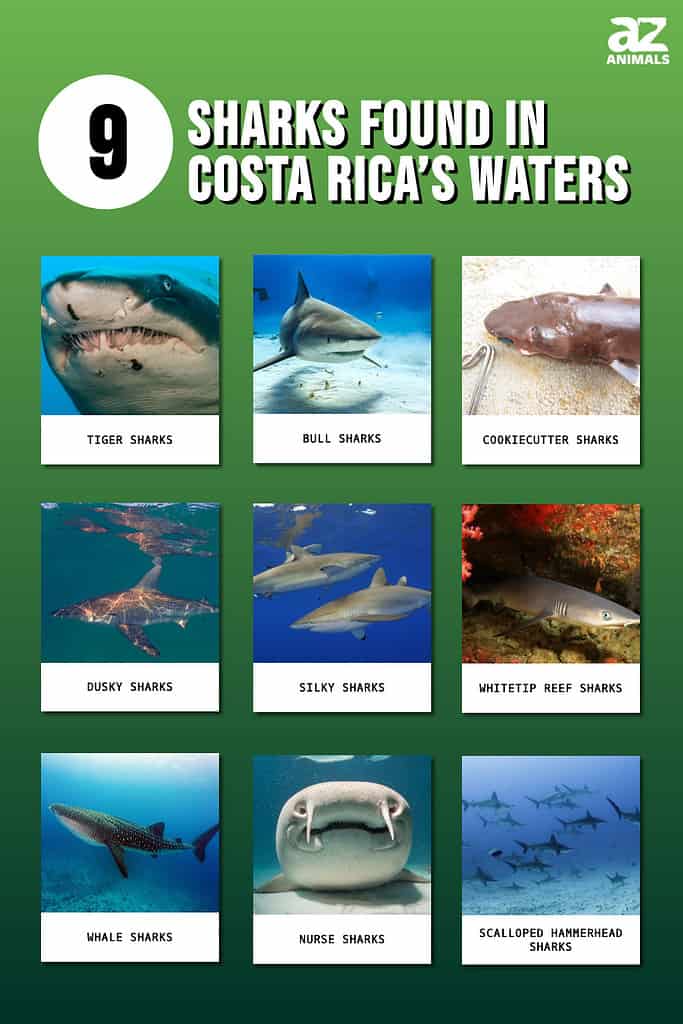
Are Sharks Common in Costa Rica?
It’s unlikely you’ll run into a shark while sunbathing in Costa Rica or walking along the beach. While there are many sharks in the water, they rarely interact with humans. In general shark attacks are rare. Shark attacks in Costa Rica are almost unheard of. For instance, in 400 years, there have only been 12 shark attacks. You have a higher chance of drowning than dying from a shark attack in Costa Rica. Although some species are more aggressive than others, sharks don’t actively hunt humans. Most unprovoked bites are out of confusion. While the chances are low if you want to lower your chances even more, stick to swimming in clear water and away from shark prey.
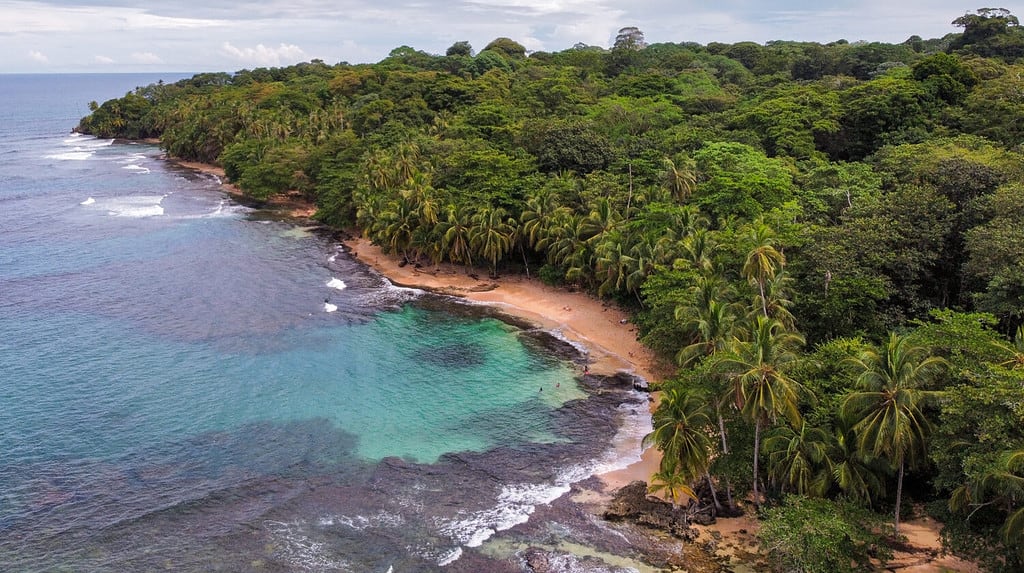
Shark attacks are rare in Costa Rica.
©XFito/Shutterstock.com
9 Sharks Found in Costa Rica’s Waters
Although shark attacks are rare, there are still about a dozen shark species that frequent Costa Rica’s waters. Follow along to discover 9 sharks found in Costa Rica’s waters and what they look like.
1. Tiger Sharks
Starting our list of sharks found in Costa Rica is the tiger shark. This highly aggressive and large shark is sometimes found off the coast of Costa Rican islands. Sadly, a tiger shark in November 2017 attacked and killed a tourist, Rohina Bhandari, while scuba diving off the coast of Cocos Island National Park. According to the tour guide, a 26-year-old professional, he tried to scare the tiger shark away, but it was too late for the tourist. A boater nearby distracted the shark while it was attacking the tour guide. He sustained injuries but survived.
Interestingly, tiger sharks disappeared from the coast of Costa Rica 30 years ago but began reappearing around 2008. Researchers tagged five tiger sharks off the coast of the island.
Tiger sharks are listed as Near Threatened on the ICUN Red List. These massive animals can reach up to about 16 feet long. Females are larger than males. As their name suggests, tiger sharks have tiger stripe-like markings on their sides. Tiger sharks are apex predators with few natural predators except for orca whales and humans.

Tiger sharks are apex predators. Females can reach up to about 16 feet long.
©Michael Rothschild/Shutterstock.com
2. Bull Sharks
Another dangerous shark you can find in Costa Rica is the bull shark. Sometimes, these massive sharks are spotted on diving tours off the coast of islands like Isla del Caño and Isla del Coco. However, bull sharks are more common in the Murcielago Islands.
Bull sharks are unique because they can swim in both freshwater and saltwater. They are common in shallow warm waters. Bull sharks are stocky, aggressive, and broad. At birth, these large sharks are about 2 feet and 8 inches long. Although not the largest of the shark species, these sharks can reach up to 13 feet long. Bull sharks rarely attack, but are dangerous when they do. They have a bite force of up to 5,914 newtons.
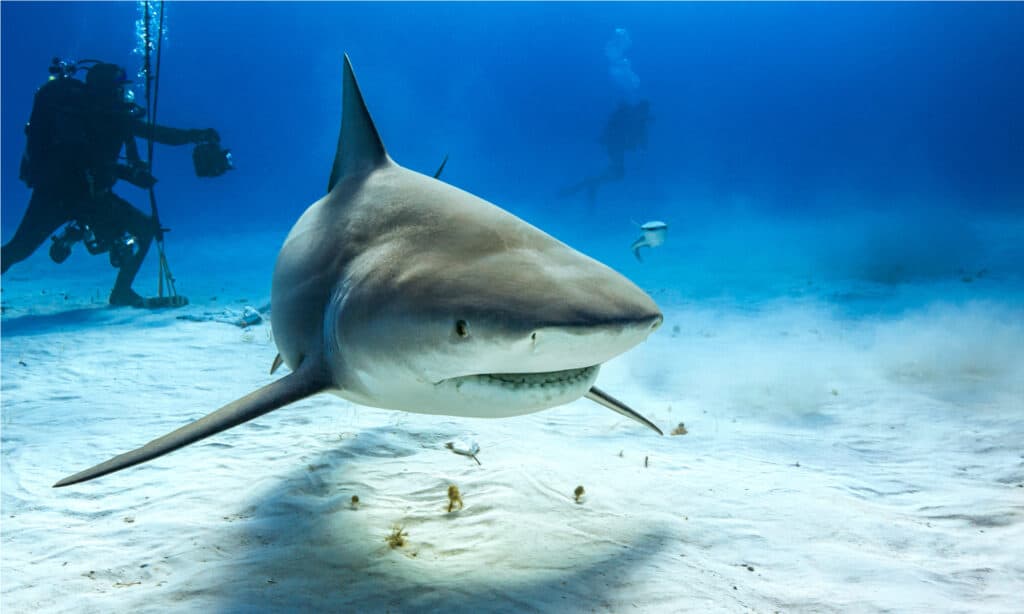
Bull sharks have a bite force of up to 5,914 newtons.
©Carlos Grillo/Shutterstock.com
3. Cookiecutter Sharks
The next shark on our list is the cookiecutter shark, one of the strangest shark species in the world. They aren’t the most common species in Costa Rica but are occasionally spotted far off the coast. Cookiecutter sharks are also called cigar sharks. They are small and pose no threat to humans, although their appearance can cause a scare.
These small squaliform sharks migrate to great lengths each day. They are only about 16.5 to 22 inches long and have slender bodies. So, why are they named cookiecutter sharks? If you take a look at their mouth, they have sharp, knife-like teeth and suctorial lips. When they take a bite from their prey, they leave behind a cookiecutter-like mark. Although small, cookiecutter sharks are mighty. Scientists have discovered these cookiecutter-like wounds on large animals like sperm whales, leopard seals, goblin sharks, great white sharks, and more.

Cookiecutter sharks are small, only reaching between 16.5 to 22 inches long.
©PIRO/NOAA Observer Program, Public domain, via Wikimedia Commons – Original / License
4. Dusky Sharks
Dusky sharks are also found in Costa Rica. This shark species weighs about 420 pounds. They are generalist apex predators that scientists have recorded at depths up to 1,300 feet. Although most dusky sharks weigh 420 pounds, the largest recorded dusky shark weighed 765 pounds. They are common sharks found all over the world. Not only can you see dusky sharks off the coast of Costa Rica, but also in Cuba, the United States, Spain, Japan, South Africa, and Chile.
Dusky sharks rarely stay in one place for long. They are very migratory fish. Fully grown dusky sharks have no major predators. However, young dusky sharks are preyed on by other shark species and sometimes birds.
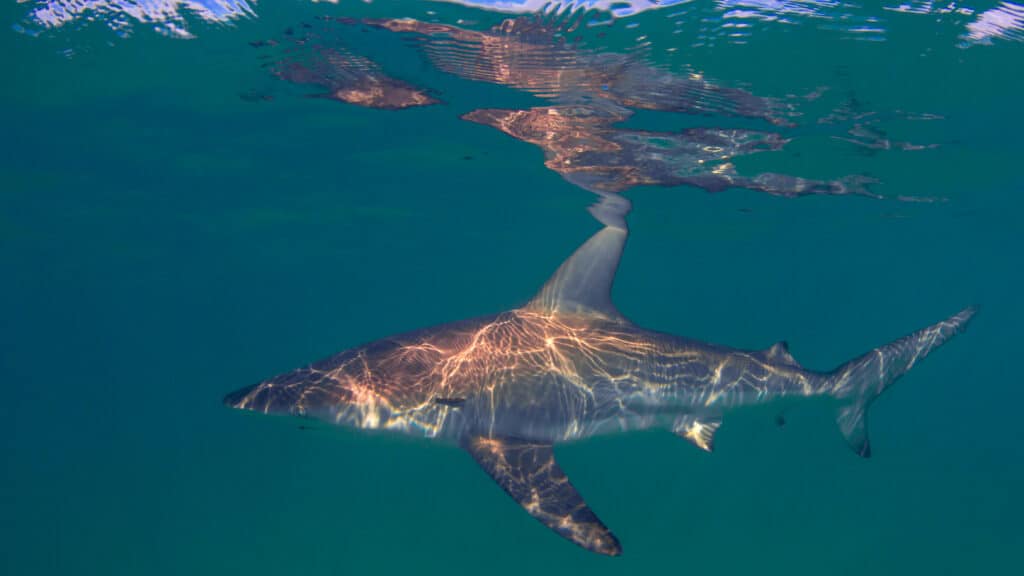
The largest dusky shark ever recorded weighed 765 pounds.
©Rich Carey/Shutterstock.com
5. Silky Sharks
Next on our list of sharks found in Costa Rica’s waters is the silky shark. Silky sharks are one of the most common shark species in Costa Rica. They are especially spotted in Cocos. Sadly, this shark species is listed as Vulnerable on the IUCN Red List. Silky sharks go by many names. They are sometimes also called olive sharks or sickle sharks.
Silky sharks rarely interact with humans. However, they occasionally swim next to divers out of curiosity. They are considered dangerous because of their size, but there have been few attacks. These sharks are about 8 feet long, but the largest recorded silky measured 11 feet long. Silky sharks aren’t picky eaters, but they’ve been frequently recorded following and attacking schools of tuna. Silky shark attacks and interactions are rare because they mostly inhabit the open ocean. They mostly live in depths up to 660 feet but can dive as deep as 1,600 feet.

Silky sharks are very common in Costa Rica.
©Shpatak/Shutterstock.com
6. Whitetip Reef Sharks
Like silky sharks, whitetip reef sharks are very common in Costa Rica. Many divers interact with whitetip reef sharks daily. These sharks are generally not aggressive. While they aren’t aggressive, they can grow comfortable around divers and spear fishers, taking fish from the spears. This sometimes leads to accidental bites. You can find them throughout Costa Rica, including off the coast of the Bat Islands and Cocos Island.
Whitetip reef sharks are members of the Carcharhinidae family. This shark is found across the entire Indo-Pacific region. They are docile, slender, and weigh up to 40 pounds. Most whitetip reef sharks don’t reach 5 feet long. One report observed a 6.9-foot whitetip reef shark, but this isn’t confirmed. Instead of feeding in the open ocean, whitetip reef sharks use their size to their advantage and wiggle into small spaces in reefs to find food. They consume small fish, eels, and crabs.

Generally, whitetip reef sharks aren’t agressive.
©Rich Carey/Shutterstock.com
7. Whale Sharks
Next on our list is the whale shark. Imagine taking a swim or an eco-tour on a boat in Costa Rica and witnessing a docile and large whale shark! Although they are sometimes spotted in Costa Rica, there is no guarantee you’ll see one.
Whale sharks are filter-feeding sharks that pose no threats to humans. They are docile and calm. Sadly though, whale sharks are listed as Endangered on the IUCN Red List. Experts can’t estimate how many are left in the wild. Whale sharks are threatened by vessel strikes and by-catch losses. Just how big are these sharks? Whale sharks are the largest non-cetacean animals in the world. Female whale sharks reach between 46 to 72 feet long. Male whale sharks are smaller.

Whale sharks are slow and docile animals. They are also the largest non-cetacean animals in the world.
©Jan Finsterbusch/Shutterstock.com
8. Nurse Sharks
Another animal that lives in Costa Rica’s waters is the nurse shark. Nurse sharks are very common in Costa Rica. They are large, reaching about 10 feet long. Divers and snorkelers in Costa Rica can sometimes spot nurse sharks slowly moving or feeding on the sandy floor. Nurse sharks are docile and rarely dangerous. However, if provoked, they can attack.
Nurse sharks weigh about 130 pounds. On the IUCN Red List, they are listed as Vulnerable. However, their status depends on the region. For instance, they are considered as Least Concern in the United States and the Bahamas.
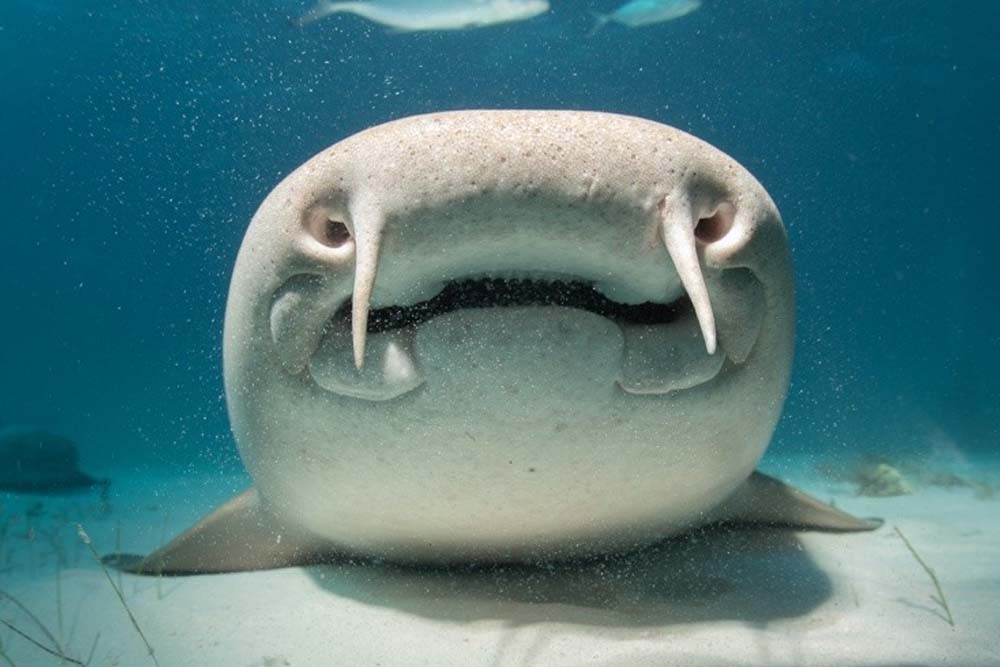
Nurse sharks are common off the coast of Costa Rica.
©Maui Topical Images/Shutterstock.com
9. Scalloped Hammerhead Sharks
Last but not least is the scalloped hammerhead shark, which is found throughout the waters of the Coco Island National Park. These large sharks are unique and known for their hammer-shaped heads. While in Costa Rica, you can take a tour to carefully dive with hammerhead sharks.
Scalloped hammerhead sharks are shy, and rarely attack humans unless provoked. These sharks are listed as Critically Endangered on the IUCN Red List. Overfishing is a main concern. These sharks are hunted for their large fins. Sadly, sometimes scalloped hammerhead sharks are also caught in nets and drown.
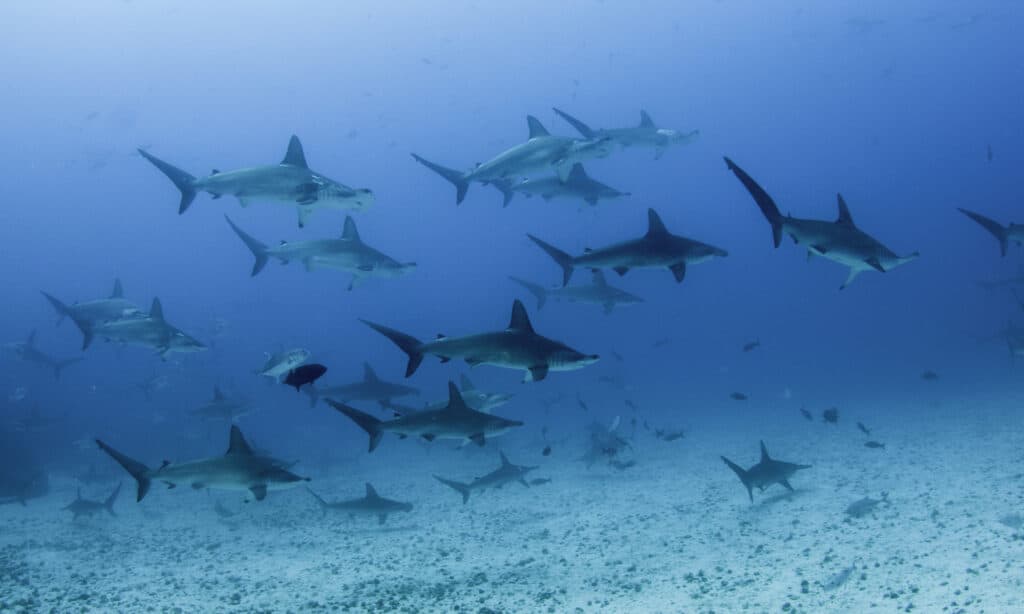
Scalloped hammerheads are critically endangered because they are over-fished.
©wildestanimal/Shutterstock.com
Summary of 9 Sharks Found in Costa Rica’s Waters
| Shark Species | IUCN Red List Status | Threat to Humans | |
|---|---|---|---|
| 1. | Tiger | Near threatened | Highly aggressive; can kill humans |
| 2. | Bull | Vulnerable | Attacks are rare; dangerous if they do attack |
| 3. | Cookiecutter | Least Concern | Small; no threat to humans |
| 4. | Dusky | Vulnerable | Rarely interact with humans; dangerous due to size |
| 5. | Silky | Vulnerable | Curious but usually nonaggressive; considered dangerous for their size |
| 6. | Whitetip Reef | Near Threatened | Can get aggressive around divers and spear fishers, taking fish from the spears |
| 7. | Whale | Endangered | Not threatening; docile |
| 8. | Nurse | Vulnerable | Not threatening; docile; can attack if provoked |
| 9. | Scalloped Hammerhead Sharks | Critically Endangered | Not threatening; shy; can attack if provoked |
The photo featured at the top of this post is © le bouil baptiste/Shutterstock.com
Thank you for reading! Have some feedback for us? Contact the AZ Animals editorial team.







